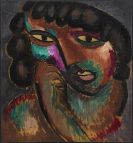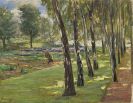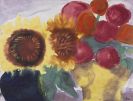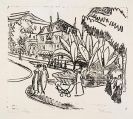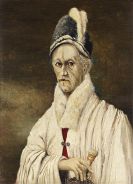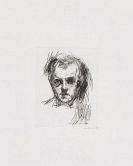
Victor Horta
Gent
1861 -
Brüssel
1947
The Belgian architect Victor Horta was the initiator and leading exponent of Art nouveau in Belgium. In Brussels Victor Horta built a great many private houses as well as public buildings, which are among the most important examples of Art nouveau. Born the son of a shoemaker in Ghent in 1861, Victor Horta began studying architecture at the Académie des Beaux-Arts in Ghent; from 1874 until 1877 he attended the Royal Atheneum there. In 1878 Victor Horta went to Paris, where he worked until 1880 in the studio of the interior decorator Jules Debuyson.
Victor Horta would later write in his memoirs: "My stay in Paris, the walks I took, the monuments and museums I visited, awakened my artistic sensitivity. No academic education could have inspired me so strongly and lastingly as "reading" monuments." In 1881 Victor Horta moved to Brussels and finished his studies there at the Académie des Beaux-Arts. From 1881 Victor Horta also worked in the practice of the Neo-Classical architect Alphonse Balat. Victor Horta was particularly inspired by the French architect and theorist Eugène Viollet-le-Duc. On the one hand, Viollet-le-Duc clamored for protecting and restoring medieval buildings; on the other he was a passionate advocate of the new engineering in architecture and was committed to the use of the new building materials, particularly cast iron, and modern building techniques. In "Entretiens sur l'architecture" (published 1863 and 1872) Viollet-le-Duc drew a comparison between the Gothic skeletal method of construction and 19th-century cast-iron construction, emphasizing the close relationship between them.
From 1892 Victor Horta designed several houses and public buildings in Brussels, for which he used cast iron for structural and decorative reasons. In 1892-93 Hôtel Tassel was built, with an interior featuring exposed cast-iron construction and glass elements. Further, it was notable for the richness of its decoration, shaped by organic forms and soft lines. In 1893 Victor Horta built Maison Autrique, which was followed in 1895-96 by Maison Winssinger and, from 1895-1900, Hôtel Eetvelde, buildings Victor Horta conceived as total works of art in the Art nouveau style.
Between 1896 and1899 Victor Horta designed Maison du Peuple, the headquarters of the Belgian Socialist party, with a façade entirely constructed of cast-iron and glass - the first of its kind in Brussels. In 1900-01 "À l'Innovation", a department store, was built, for which Victor Horta also used the Art nouveau style. From 1912 Victor Horta taught at the Académie des Beaux-Arts in Brussels and was director of it from 1913 until 1915 . Between 1916 and 1919 Victor Horta lived in London and the United States of America. In subsequent years, Victor Horta distanced himself from Art nouveau, now designing buildings in a more Neo-Classical formal language featuring straight lines, as exexmplifed by the Palais des Beaux-Arts in Brussels, built between 1922 and 1928.
Would you like to sell a work by Victor Horta?
Infos for seller
